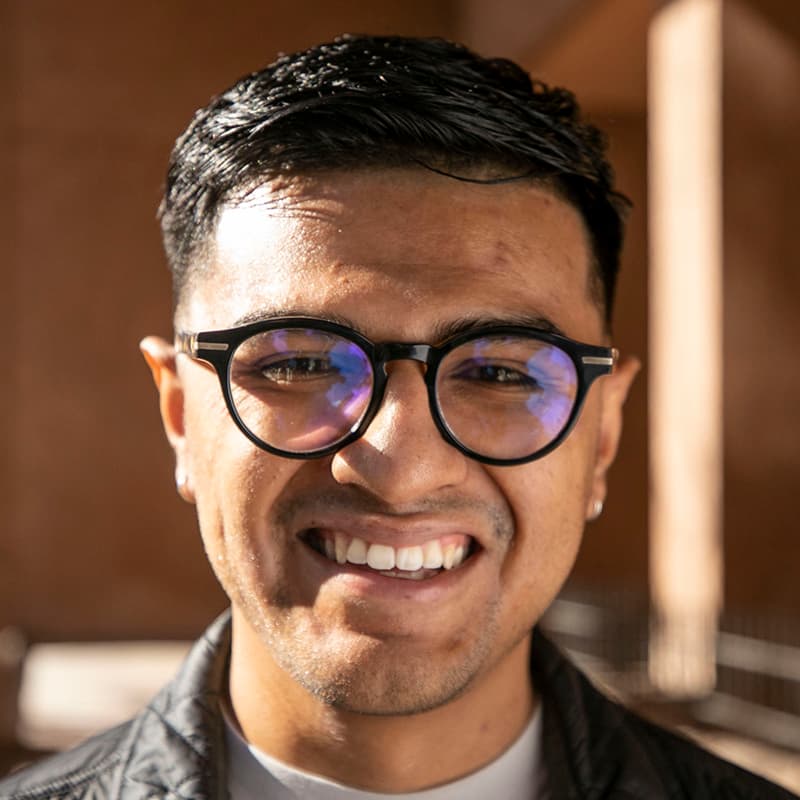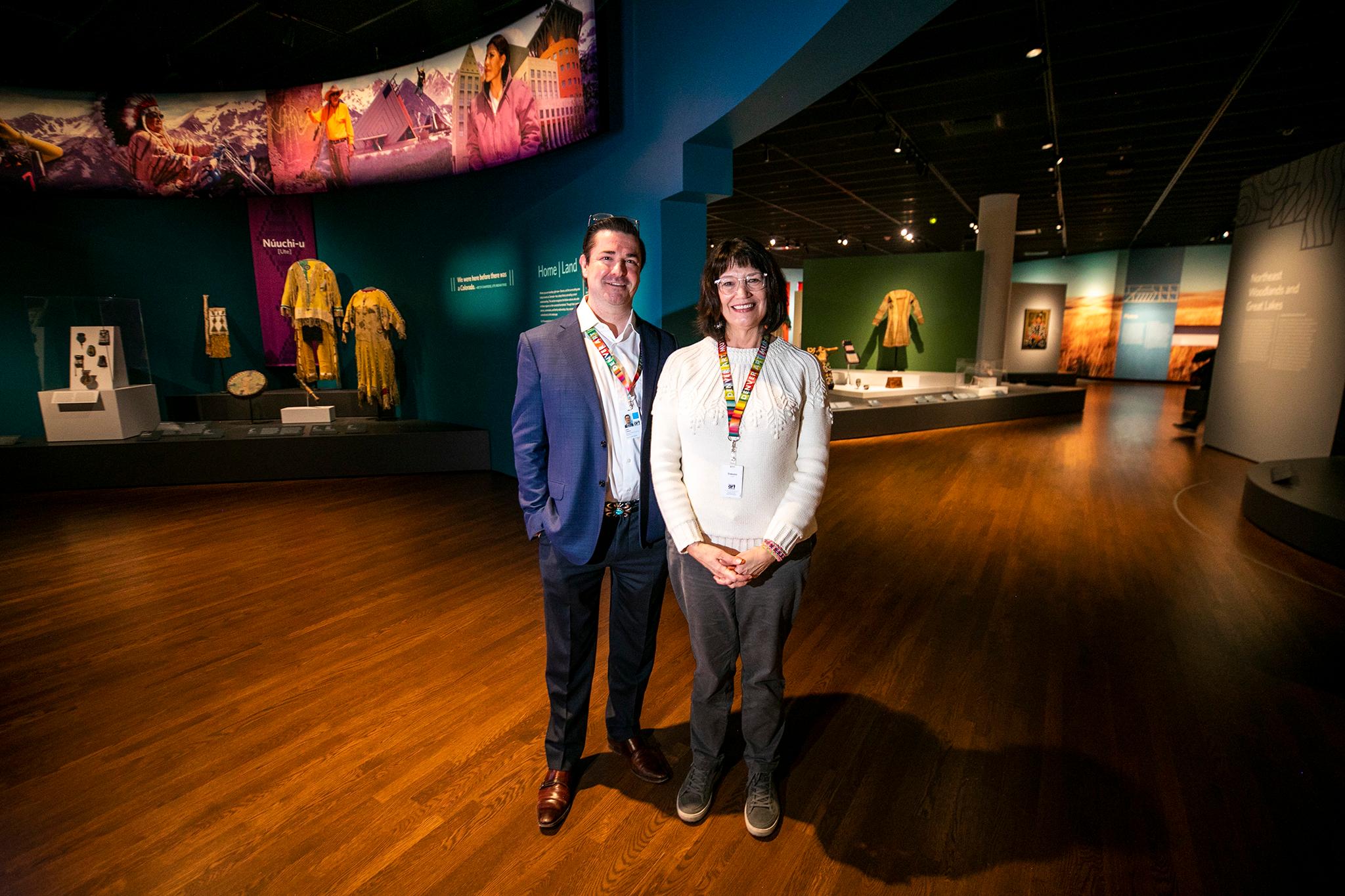After a long day of work at the Denver Art Museum, Native Arts curator John Lukavic stands directly above where a case of Native American ceramics once stood.
Dressed in a navy blue suit jacket and a white button-down with no tie, Lukavic says he and his team of curators decided to remove the case from display ahead of new federal guidelines intended to apply pressure on the nation's museums.
"The case in question used to sit right here," Lukavic said. "We always say that our first audience are Native communities. In order to do that, we have to have good relationships."

Under the pressure of updated federal rules that went into effect earlier this year, museums around the country have closed galleries and curators are scrambling to assess the compliance of Native American cultural items within their collections.
The Native American Graves Protection and Repatriation Act, or NAGPRA, was a Federal law passed in 1990 with the intention of protecting and returning Native American artifacts that fall under the categories of human remains, associated and unassociated funerary objects, objects of cultural patrimony and sacred objects.
Despite the effort, fewer than 40% of museums that receive federal funds have corrected their holdings and less than $60,000 in civil penalties have been collected from just 20 museums since the statute was enacted more than three decades ago.
Revised federal regulations are intended to expedite repatriation and strengthen the law's enforcement, giving museums a five-year timeline to inventory their collections as well as outlining a $7,475 base civil penalty. Museums must also obtain consent from tribes before displaying or performing research on cultural items.

Chip Colwell, a former senior curator at the Denver Museum of Nature & Science and an anthropology expert, believes that the impact of these revisions also lies in the language.
First, changing the standards of evidence for cultural affiliation is expected to subvert a museum's ability to excuse returning NAGPRA-protected items in the past, according to Colwell. Furthermore, revisions also make it clear that items subject to NAGPRA should not be used for display, programming or research.
"We'll have to see how these regulations play out on the ground," Colwell said. "But at least on paper, they will provide much stronger language for tribes and descendants to be able to use and clear expectations for the roles of museums in this process."
In anticipation of the updated NAGPRA guidelines, staff and curators at the Denver Art Museum participated in a training last November on the revised law, determining they had, "no specific concerns regarding the current displays of items in the DAM's galleries," they shared in a blog post.
There was however a case of Mississippian/Caddoan ceramics on view that was removed out of caution due to the more than 30 Indigenous tribes that claim descent. The pieces, three of which were purchased in 1987 and another that was donated in 1983, date back to anywhere between 900 to 1400 A.D. and originate from a vast portion of the U.S.
"We recognize that there is a chance that it could have come from a site that might have fallen under NAGPRA, we don't know," said Lukavic. "Some tribes chose to reach out to us to consult further, other tribes didn't respond ... Under new regulations it makes it clear that no notification is not consent."

This brings up one of the concerns that museums have expressed leading up to the revised law, being a lack of resources and the difficulty behind communicating with tribes that are otherwise unable to field the many requests from museums for consultation, oftentimes led by a Tribal Historic Preservation Officer, or THPO.
"There is a concern from THPOs that, will they have the capacity of truly engaging deeply with every museum that asks?" Lukavic said.
The decision was made to remove the artifacts from display out of an abundance of caution and as a "form of symbolic solidarity" with the spirit of the new regulations.
In Colwell's experience, there were times when a museum's budget amassed three times those of tribal communities and others that didn't have the resources to handle a museum's request for consultation and even spent years calling, emailing and writing letters to get in touch with someone. These examples were commonplace, said Colwell.
"It's precisely why it's incumbent upon museums to do the majority of the work," Colwell said. "The museums are the ones that are holding ostensibly, or possibly stolen items, that they have been complicit in. Asking tribes to do the majority of the work, to me, is unfair and unjust because they are the victims of the crime, not the perpetrators of it."

The Denver Art Museum maintains that it completed its NAGPRA consultations in the 90s, going as far as publishing a policy on the collection and repatriation of cultural items in 1994 in partnership with Walter Echo-Hawk, a Native American attorney instrumental in the passage of NAGPRA itself.
"If institutions can wrap their mind around the positive aspects [of NAGPRA], it is that it gives you an opportunity to work with communities and build these deep and reciprocal relationships," said Dakota Hoska, associate curator of Native Arts.
Hoska looks forward to NAGPRA consultations, as laborious as they may be, because of the potential to learn something new. How certain items should be handled and preserved, as well as if items can be shown and how they should be shown, are just some examples of what curators learn in these conversations, both in-person and virtual.
"I'm Native, I like to be with other Native people as they're looking at things and I learn a lot," Hoska said. "It's more cumbersome, it's more intricate, there's more moving parts, but it's always better. There's always something really beautiful that happens when you have multiple voices that contribute."
These conversations don't always lead to repatriation.
"Even if something falls under NAGPRA, and is subject to repatriation, and that the museum is a hundred percent willing to give back, doesn't mean a tribe wants it back," Lukavic said. "That happens a lot."

Despite hundreds of Native American remains still being held in Colorado museums and the closing of a harmful American Indian exhibit in Denver, Colorado as a state has been viewed as a leader in NAGPRA efforts.
In reference to his time at DMNS, Colwell said:
"We really were at the forefront of a national dialogue about how to address the legacies of these collections," Colwell said. "At the same time we had things like a scalp that was taken from Sand Creek of an Arapahoe Chief. So to me, doing well has kind of just been doing the right thing."
As museums around the nation continue to grapple with updated, reinforced federal rules, Hoska believes museums miss out on the true spirit of NAGPRA.
"The more you are trying to hold on to these things and protect them from anyone seeing them or getting them back, the more institutions are missing out on opportunities to be enriched," Hoska said. "To gain wisdom, knowledge, understanding, friends. This is a great opportunity to get to know Native folks."













